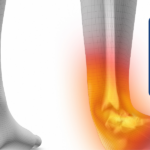Diabetes is a chronic condition that affects millions of people worldwide. One of the most significant complications of diabetes is foot ulcers. Diabetic foot ulcers are open sores that can develop on the feet, and if left untreated, they can lead to serious complications, including amputation. Fortunately, diabetic foot ulcers can be prevented, and this begins with regular diabetic foot assessments. In this article, we’ll provide a guide to understanding the dangers of diabetic foot ulcers and how to perform a diabetic foot assessment.
Understanding Foot Ulcers
Diabetic foot ulcers are open sores that usually develop on the bottom of the feet, toes, and sometimes the sides of the feet. They are caused by nerve damage and poor blood flow, which are common complications of diabetes. When nerve damage occurs, a person with diabetes may not feel pain or other sensations in their feet, making it difficult to notice any injuries or wounds. Poor blood flow can also slow down the healing process, leading to the development of foot ulcers.
The Dangers of Foot Ulcers
If left untreated, diabetic foot ulcers can lead to serious complications, including infection, gangrene, and amputation. Diabetes can also affect the immune system, making it harder for the body to fight off infections. An untreated infection can spread quickly and lead to more severe complications. In severe cases, an amputation may be required to prevent the spread of infection.
Performing a Foot Assessment
A diabetic foot assessment is a critical step in preventing foot ulcers and other complications. A diabetic foot assessment should be performed by a healthcare professional regularly, and it involves checking the feet for any signs of nerve damage, poor circulation, or other issues that may lead to foot ulcers. During a diabetic foot assessment, the healthcare professional will typically check for the following:
- Loss of sensation in the feet or toes
- The presence of calluses or corns
- The color and temperature of the feet
- The presence of any open sores, blisters, or wounds
- The presence of swelling or redness in the feet
The healthcare professional may also perform additional tests, such as a doppler ultrasound or a monofilament test, to check for any signs of poor circulation or nerve damage.
Preventing Foot Ulcers
Preventing diabetic foot ulcers is essential, and it begins with regular diabetic foot assessments. In addition to foot assessments, there are several things that people with diabetes can do to prevent foot ulcers, including:
- Keeping the feet clean and dry
- Wearing comfortable and properly fitting shoes and socks
- Checking the feet regularly for any signs of injury or wounds
- Not going barefoot, even at home
- Keeping blood sugar levels under control
- Maintaining a healthy diet and exercise regimen
Conclusion
In conclusion, diabetic foot ulcers are a dangerous complication of diabetes that can lead to serious health problems. Regular diabetic foot assessments from doctors like Dr. Chetan Oswal in Pune are essential to prevent foot ulcers and other complications. By understanding the dangers of diabetic foot ulcers and performing regular assessments, people with diabetes can take steps to prevent foot ulcers and maintain good foot health.





